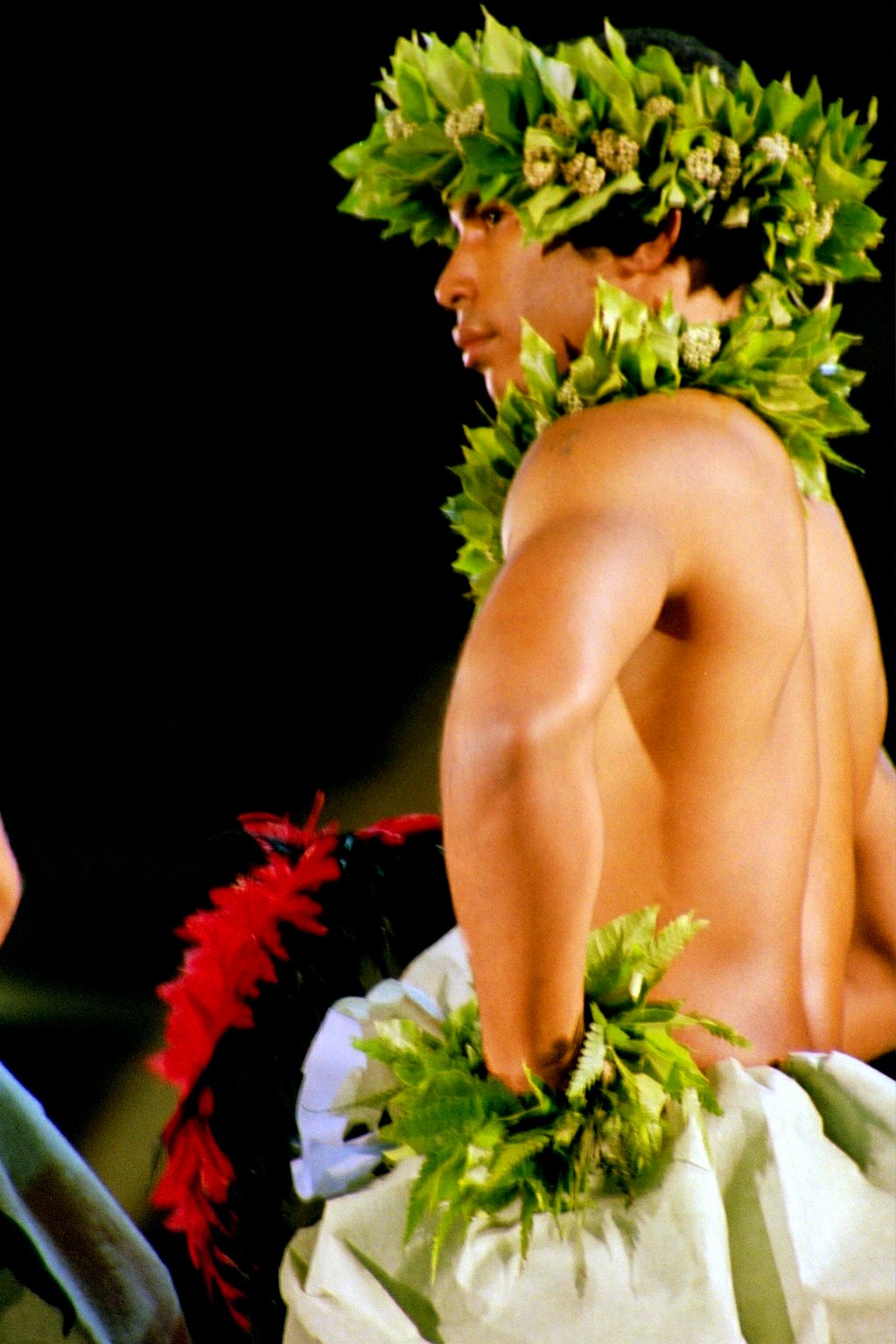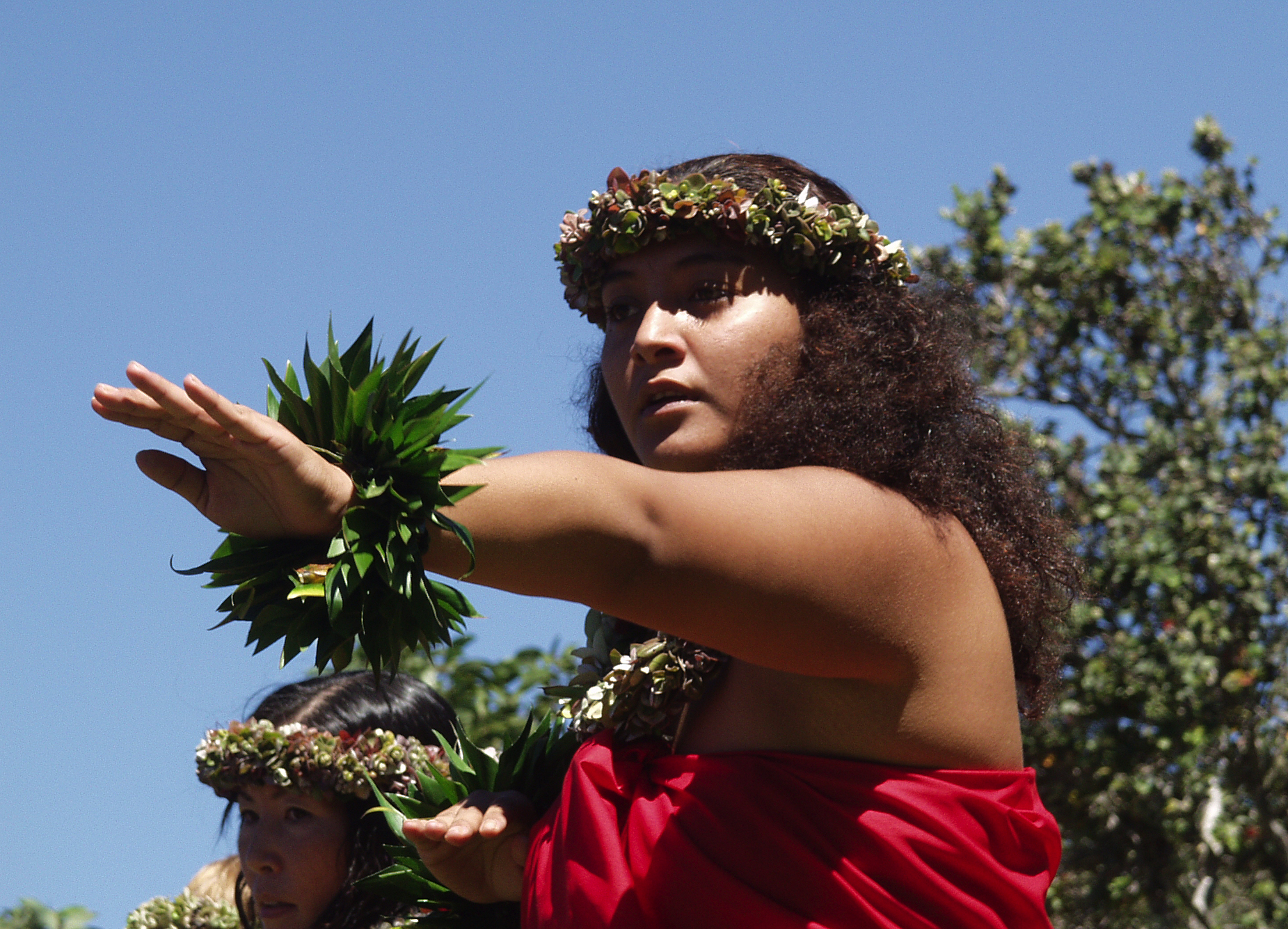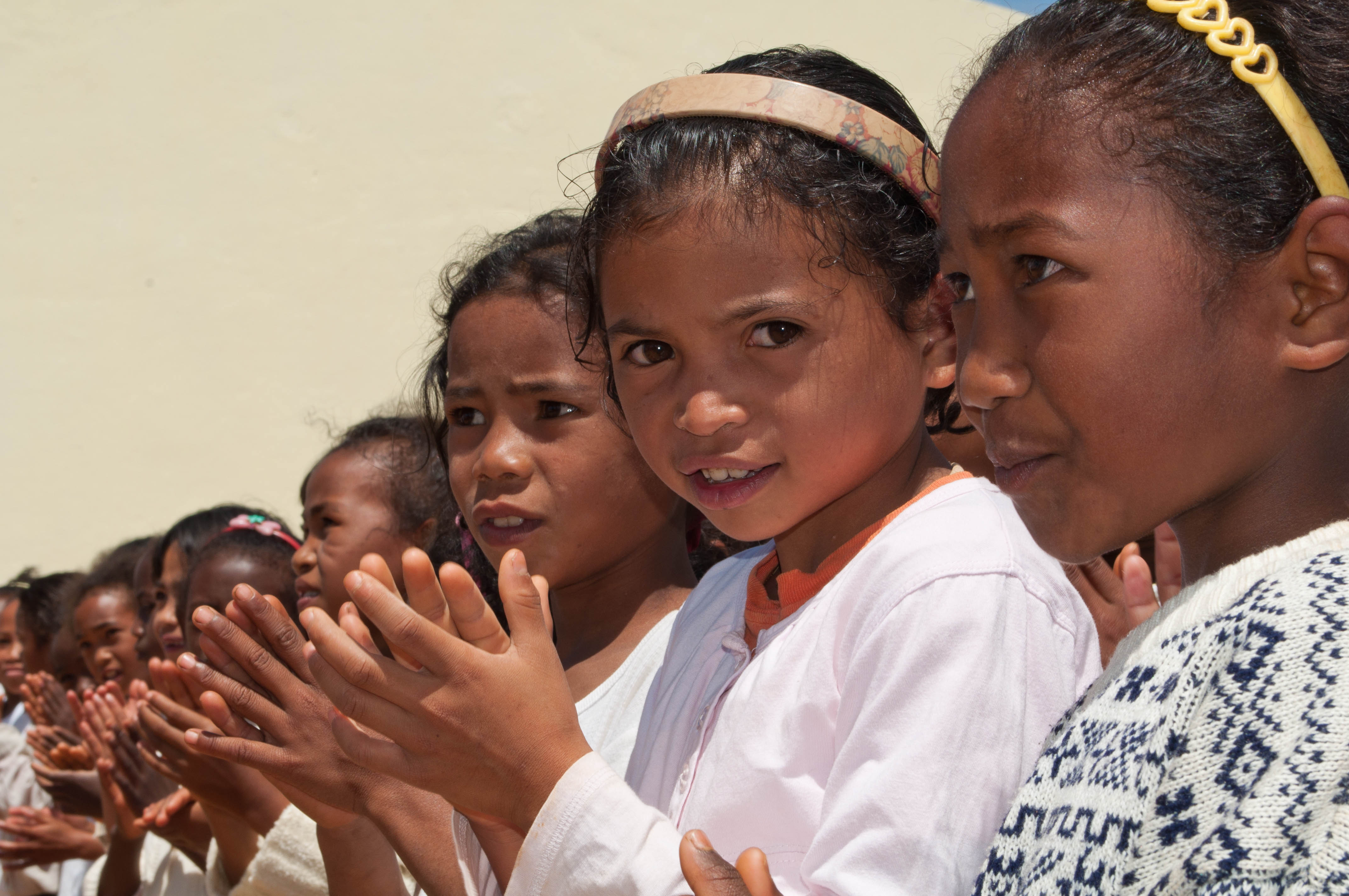|
Hapa
Hapa is a Hawaiian word for someone of multiracial ancestry. In Hawaii, the word refers to any person of mixed ethnic heritage, regardless of the specific mixture.: "Thus, for locals in Hawai’i, both hapa or hapa haole are used to depict people of mixed-race heritage.": "Currently, Hawaiian locals use 'hapa' to refer to any individual who is racially mixed." The term is used for any multiracial person of partial East Asian, Southeast Asian, or Pacific Islander mixture in California. In what can be characterized as trans-cultural diffusion or the wave model, this latter usage has also spread to Massachusetts, Ohio, and Oregon. Both uses are concurrent. Historical and Hawaiian usage The word "hapa" entered the Hawaiian language in the early 1800s, with the arrival of Christian missionaries who instituted a Hawaiian alphabet and developed curriculum for schools. It is a transliteration of the English word "half," but quickly came to mean "part," which could be combined with ... [...More Info...] [...Related Items...] OR: [Wikipedia] [Google] [Baidu] |
My Little Grass Shack In Kealakekua, Hawaii
"My Little Grass Shack in Kealakekua, Hawaii", written by Tommy Harrison, Bill Cogswell, and Johnny Noble in Hawaii in 1933, is a Hawaiian song in the Hawaiian musical style known as ''hapa haole''. One of the earliest recordings by Ted Fio Rito and his orchestra reached number one on the charts in 1934. ''Honolulu'' magazine listed it as number 41 in a 2007 article, "50 Greatest Songs of Hawaii". It has been heard in many movies and television shows and has been covered dozens of times. The title is sometimes shortened to "My Little Grass Shack" or "Little Grass Shack". Composition The song was written by Tommy Harrison and Bill Cogswell for Kona's Independence Day celebration in 1933. The scene was set by the Kona Historical Society: Cogswell, a Montana native working in Honolulu who in the 1950s became managing director of the Hawaii Visitors Bureau, was accompanying visitors to the Big Island of Hawaii when he wrote the lyrics, a parody of a 1924 song, "Back in Hackensack, ... [...More Info...] [...Related Items...] OR: [Wikipedia] [Google] [Baidu] |
Hawaiian Music
The music of Hawaii includes an array of traditional and popular styles, ranging from native Hawaiian folk music to modern rock and hip hop. Styles like slack-key guitar are well known worldwide, while Hawaiian-tinged music is a frequent part of Hollywood soundtracks. Hawaii also made a contribution to country music with the introduction of the steel guitar.Unterberger, pgs. 465 - 473 In addition, the music which began to be played by Puerto Ricans in Hawaii in the early 1900s is called cachi cachi music, on the islands of Hawaii. The traditional music of Hawaii’s Native Hawaiian community is largely religious in nature, and includes chanting and dance music. Hawaiian music has had a notable impact on the music of other Polynesian islands; Peter Manuel called the influence of Hawaiian music a "unifying factor in the development of modern Pacific musics".Manuel, pgs. 236 - 241 Music festivals and venues Major music festivals in Hawaii include the Merrie Monarch Hula Fes ... [...More Info...] [...Related Items...] OR: [Wikipedia] [Google] [Baidu] |
Hāfu
is a Japanese language term used to refer to a person ethnically half Japanese and half non-Japanese. A loanword from English, the term literally means "half," a reference to the individual's non-Japanese heritage. The word can also be used to describe anyone with mixed-racial ancestry in general. Japan remains one of the most homogeneous societies on the planet, which puts children of non-Japanese parents in a unique and difficult position, as they are called ''hāfu'' Japanese. ''Hāfu'' individuals are well represented in the media in Japan and abroad and recent studies in the 2010s estimate that 1 in 30 children born in Japan are born to interracial couples. Related terms In Japanese * – An ''ainoko'' is a Japanese person with a non-Japanese or , parent. It was historically often associated with discriminating sentiment. Almost never used today in Japan. * – A ''daburu'' is an alternative to Hāfu that focuses on the positive connotations of two cultures instead o ... [...More Info...] [...Related Items...] OR: [Wikipedia] [Google] [Baidu] |
Multiracial People
Mixed race people are people of more than one race or ethnicity. A variety of terms have been used both historically and presently for mixed race people in a variety of contexts, including ''multiethnic'', ''polyethnic'', occasionally ''bi-ethnic'', '' Métis'', '' Muwallad'', ''Colored'', ''Dougla'', ''half-caste'', '' ʻafakasi'', ''mestizo'', ''Melungeon'', ''quadroon'', ''octoroon'', '' sambo/zambo'', ''Eurasian'', ''hapa'', ''hāfu'', ''Garifuna'', ''pardo'' and ''Guran''. A number of these terms are now considered offensive, in addition to those that were initially coined for pejorative use. Individuals of mixed-race backgrounds make up a significant portion of the population in many parts of the world. In North America, studies have found that the mixed race population is continuing to grow. In many countries of Latin America, mestizos make up the majority of the population and in some others also mulattoes. In the Caribbean, mixed race people officially make up the majo ... [...More Info...] [...Related Items...] OR: [Wikipedia] [Google] [Baidu] |
One Big Hapa Family
''One Big Hapa Family'' is a 2010 live-action/animated documentary film directed by Canadian director Jeff Chiba Stearns. The documentary explores aspects that influence most Japanese-Canadians to marry inter-racially and how the mixed Japanese generation perceives its multiracial identity. Awards and nominations Awards *2010 NFB Best Canadian Film and Video Award: Toronto Reel Asian International Film Festival *2010 Closing Night Film: Vancouver Asian Film Festival The Vancouver Asian Film Festival (VAFF) is an annual film festival held in Vancouver, British Columbia for about 4–5 days in November. Launching in 1996, it is Canada’s oldest Asian film festival, exhibiting films and videos by North Amer ... *2011 Opening Night Film: DisOrient Asian American Film Festival of Oregon *2011 Best Documentary Award: Trail Dance Film Festival *2011 Opening Night Film: AmérAsia International Film Festival *2011 Closing Film: Mixed Roots Film and Literary Festival *2011 Rising Star ... [...More Info...] [...Related Items...] OR: [Wikipedia] [Google] [Baidu] |
Hula
Hula () is a Hawaiian dance form accompanied by chant (oli) or song (Mele (Hawaiian language), mele). It was developed in the Hawaiian Islands by the Native Hawaiians who originally settled there. The hula dramatizes or portrays the words of the oli or mele in a visual dance form. There are many sub-styles of hula, with the main two categories being Hula ʻAuana and Hula Kahiko. Ancient hula, as performed before Western encounters with Hawaii, is called ''kahiko''. It is accompanied by chant and traditional instruments. Hula, as it evolved under Western influence in the 19th and 20th centuries, is called ''auana'' (a word that means "to wander" or "drift"). It is accompanied by song and Western-influenced musical instruments such as the guitar, the ukulele, ukulele, and the double bass. Terminology for two main additional categories is beginning to enter the hula lexicon: "Monarchy" includes any hula which were composed and choreographed during the 19th century. During that t ... [...More Info...] [...Related Items...] OR: [Wikipedia] [Google] [Baidu] |
Filipino People Of Spanish Ancestry
Spanish Filipinos ( es, español filipino / hispano filipino / castellano filipino; cbk, español filipino / hispano filipino / conio; Filipino language, Filipino/ tl, Kastilà / Espanyól / Tisoy / Konyo; ceb, Katsílà / Ispaniyul; hil, Katsílà / Espanyól) are an ethnic group who trace some of their ancestry to early Spaniards, Spanish settlers from Spain and New Spain, Mexico who passed through or settled in the Philippines during the Spanish Crown’s ownership of the Spanish East Indies, territory, and also more recent arrivals. The conquistador Miguel López de Legazpi sailed from Mexico, conquered parts of the islands, and founded the first Spanish settlement in Cebu in 1565. Later he established Manila as the capital of the Spanish East Indies in 1571. The Philippine Islands were named after King Philip II of Spain and it became a territory of the Viceroyalty of New Spain which was governed from Mexico City until the 19th century, when the First Mexican Empire obt ... [...More Info...] [...Related Items...] OR: [Wikipedia] [Google] [Baidu] |
Filipino Mestizo
In the Philippines, Filipino Mestizo ( es, mestizo (masculine) / mestiza (feminine); Filipino/ tl, Mestiso (masculine) / Mestisa (feminine)) or colloquially ''Tisoy'', is a name used to refer to people of mixed native Filipino and any foreign ancestry. The word ''mestizo'' itself is of Spanish origin; it was first used in the Americas to describe people of mixed Native American and European ancestry. The Chinese Mestizos being the biggest Mestizo population, while the Spanish Mestizo being less yet a very socially significant or prestigious minority. They are very influential with the creation of Filipino nationalism. History Spanish period A Spanish expedition led by Miguel Lopez de Legazpi in 1565 started a period of Spanish colonization of the Philippines which lasted for 333 years. The Roman Catholic Church played an important role in the Spanish colonization of the Philippines beyond the preaching of the Catholic faith. Spanish missionaries contributed to educatio ... [...More Info...] [...Related Items...] OR: [Wikipedia] [Google] [Baidu] |
Amerasian
An Amerasian may refer to a person born in Asia to an Asian mother and a U.S. military father. Other terms used include War babies or G.I. babies. There are also those who may have mothers in the U.S. military or have Amerasian ancestry through their grandparents and so on. Several countries in East and Southeast Asia have significant populations of Amerasians that includes South Korea, Okinawa (Japan), Cambodia, Laos, Thailand, Vietnam, and the Philippines. The latter once having the largest US air and naval bases outside the US mainland. Definitions The term was coined by writer Pearl S. Buck and was formalized by the Immigration and Naturalization Service. Many people were born to Asian women and U.S. servicemen during World War II, the Korean War and the Vietnam War. The official definition of Amerasian came about as a result of Public Law 97-359, enacted by the 97th Congress of the United States on October 22, 1982. According to the United States Department of Justice and ... [...More Info...] [...Related Items...] OR: [Wikipedia] [Google] [Baidu] |
Afro-Asians
Afro-Asians, African Asians or simply Black Asians, often referred to as Blasians, are persons of mixed Asian and African ancestry. Historically, Afro-Asian populations have been marginalised as a result of human migration and social conflict. Africa Democratic Republic of the Congo Katanga Afro-Japanese During the 1970s, an increased demand for copper and cobalt attracted Japanese investments in the mineral-rich southeastern region of Katanga Province. Over a 10-year period, more than 1,000 Japanese miners relocated to the region, confined to a strictly male-only camp. Arriving without family or spouses, the men often sought social interaction outside the confines of their camps. In search of intimacy with the opposite sex, resulting in cohabitation, the men openly engaged in interracial dating and relationships, a practice embraced by the local society. As a result, a number of Japanese miners fathered children with native Congolese women. However, most of the mixed race in ... [...More Info...] [...Related Items...] OR: [Wikipedia] [Google] [Baidu] |
Hawaiian Sovereignty Movement
The Hawaiian sovereignty movement ( haw, ke ea Hawaiʻi), is a grassroots political and cultural campaign to re-establish an autonomous or independent nation or kingdom of Hawaii due to desire for sovereignty, self-determination, and self-governance. Some groups also advocate for some form of redress from the United States for the 1893 overthrow of Queen Lili'uokalani, and for what is described as a prolonged military occupation beginning with the 1898 annexation. The movement generally views both the overthrow and annexation as illegal."The Rape of Paradise: The Second Century Hawai'ians Grope Toward Sovereignty As The U.S. President Apologizes" , Perceptions Magazine, March/April 1996, p. 18–25 |
_by_Grace_Hudson%2C_1901.jpg)





.jpg)


